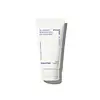What's inside
What's inside
 Key Ingredients
Key Ingredients

 Benefits
Benefits

 Concerns
Concerns

 Ingredients Side-by-side
Ingredients Side-by-side

Water
Skin ConditioningGlycerin
HumectantSodium Cocoyl Isethionate
CleansingHydroxypropyl Starch Phosphate
Diglycerin
HumectantLimonene
PerfumingPotassium Benzoate
PreservativeSodium Methyl Cocoyl Taurate
CleansingPotassium Cocoyl Glycinate
Potassium Cocoate
EmulsifyingLavandula Angustifolia Oil
MaskingButylene Glycol
HumectantAllantoin
Skin ConditioningCitric Acid
BufferingLinalool
PerfumingSodium Phytate
Citrus Aurantium Dulcis Peel Oil
Masking1,2-Hexanediol
Skin ConditioningVaccinium Angustifolium Fruit Extract
Skin ProtectingPanthenol
Skin ConditioningCaprylic/Capric Triglyceride
MaskingMaltodextrin
AbsorbentSaccharide Hydrolysate
HumectantPropanediol
SolventAcrylates/C10-30 Alkyl Acrylate Crosspolymer
Emulsion StabilisingPolyquaternium-67
Euterpe Oleracea Fruit Extract
Rubus Idaeus Leaf Extract
Skin ConditioningWater, Glycerin, Sodium Cocoyl Isethionate, Hydroxypropyl Starch Phosphate, Diglycerin, Limonene, Potassium Benzoate, Sodium Methyl Cocoyl Taurate, Potassium Cocoyl Glycinate, Potassium Cocoate, Lavandula Angustifolia Oil, Butylene Glycol, Allantoin, Citric Acid, Linalool, Sodium Phytate, Citrus Aurantium Dulcis Peel Oil, 1,2-Hexanediol, Vaccinium Angustifolium Fruit Extract, Panthenol, Caprylic/Capric Triglyceride, Maltodextrin, Saccharide Hydrolysate, Propanediol, Acrylates/C10-30 Alkyl Acrylate Crosspolymer, Polyquaternium-67, Euterpe Oleracea Fruit Extract, Rubus Idaeus Leaf Extract
Water
Skin ConditioningDisodium Cocoamphodiacetate
CleansingCocamidopropyl Betaine
CleansingAcrylates Copolymer
Glycerin
HumectantSodium Cocoyl Glutamate
CleansingSodium Cocoyl Isethionate
CleansingPolyquaternium-7
Phenoxyethanol
PreservativeMenthol
MaskingPanthenol
Skin ConditioningPolysorbate 20
EmulsifyingEthylhexylglycerin
Skin ConditioningMentha Piperita Oil
MaskingCamellia Sinensis Leaf Extract
Antimicrobial1,2-Hexanediol
Skin ConditioningCitrullus Lanatus Fruit Extract
Skin ConditioningPyrus Malus Fruit Extract
Skin ConditioningLens Esculenta Fruit Extract
Skin ConditioningSodium Lactate
BufferingSodium PCA
HumectantSodium Hyaluronate
HumectantPropylene Glycol
HumectantCaviar Extract
Skin ConditioningWater, Disodium Cocoamphodiacetate, Cocamidopropyl Betaine, Acrylates Copolymer, Glycerin, Sodium Cocoyl Glutamate, Sodium Cocoyl Isethionate, Polyquaternium-7, Phenoxyethanol, Menthol, Panthenol, Polysorbate 20, Ethylhexylglycerin, Mentha Piperita Oil, Camellia Sinensis Leaf Extract, 1,2-Hexanediol, Citrullus Lanatus Fruit Extract, Pyrus Malus Fruit Extract, Lens Esculenta Fruit Extract, Sodium Lactate, Sodium PCA, Sodium Hyaluronate, Propylene Glycol, Caviar Extract
Ingredients Explained
These ingredients are found in both products.
Ingredients higher up in an ingredient list are typically present in a larger amount.
1,2-Hexanediol is a synthetic liquid and another multi-functional powerhouse.
It is a:
- Humectant, drawing moisture into the skin
- Emollient, helping to soften skin
- Solvent, dispersing and stabilizing formulas
- Preservative booster, enhancing the antimicrobial activity of other preservatives
Glycerin is already naturally found in your skin. It helps moisturize and protect your skin.
A study from 2016 found glycerin to be more effective as a humectant than AHAs and hyaluronic acid.
As a humectant, it helps the skin stay hydrated by pulling moisture to your skin. The low molecular weight of glycerin allows it to pull moisture into the deeper layers of your skin.
Hydrated skin improves your skin barrier; Your skin barrier helps protect against irritants and bacteria.
Glycerin has also been found to have antimicrobial and antiviral properties. Due to these properties, glycerin is often used in wound and burn treatments.
In cosmetics, glycerin is usually derived from plants such as soybean or palm. However, it can also be sourced from animals, such as tallow or animal fat.
This ingredient is organic, colorless, odorless, and non-toxic.
Glycerin is the name for this ingredient in American English. British English uses Glycerol/Glycerine.
Learn more about GlycerinPanthenol is a common ingredient that helps hydrate and soothe the skin. It is found naturally in our skin and hair.
There are two forms of panthenol: D and L.
D-panthenol is also known as dexpanthenol. Most cosmetics use dexpanthenol or a mixture of D and L-panthenol.
Panthenol is famous due to its ability to go deeper into the skin's layers. Using this ingredient has numerous pros (and no cons):
Like hyaluronic acid, panthenol is a humectant. Humectants are able to bind and hold large amounts of water to keep skin hydrated.
This ingredient works well for wound healing. It works by increasing tissue in the wound and helps close open wounds.
Once oxidized, panthenol converts to pantothenic acid. Panthothenic acid is found in all living cells.
This ingredient is also referred to as pro-vitamin B5.
Learn more about PanthenolSodium cocoyl isethionate is a natural ingredient from coconut oil. It is an ultra gentle cleanser that gives a nice foam without drying the skin or impacting the skin barrier.
The amount of foam created depends on the amount of sodium cocoyl isethionate used in the product.
This ingredient also helps improve the spreadability of a product.
Learn more about Sodium Cocoyl IsethionateWater. It's the most common cosmetic ingredient of all. You'll usually see it at the top of ingredient lists, meaning that it makes up the largest part of the product.
So why is it so popular? Water most often acts as a solvent - this means that it helps dissolve other ingredients into the formulation.
You'll also recognize water as that liquid we all need to stay alive. If you see this, drink a glass of water. Stay hydrated!
Learn more about Water